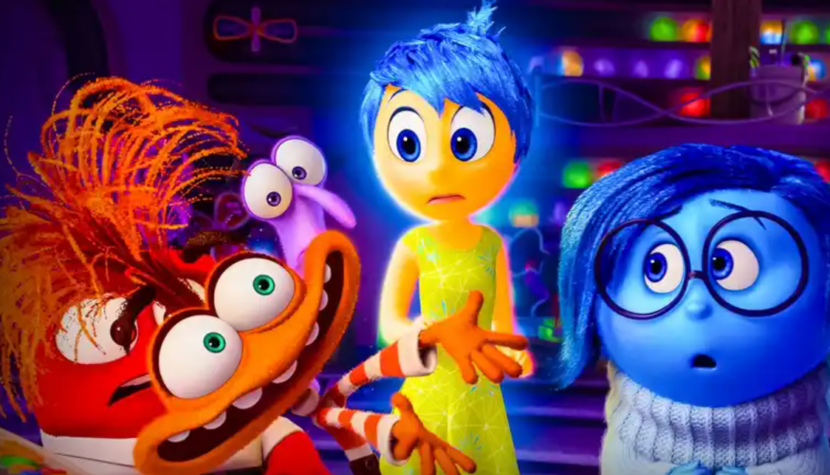INSIDE OUT 2. Mixed Feelings [REVIEW]

The upgraded console with new functions is causing some problems for Joy, who is in charge. The others—Fear, Sadness, Disgust, and Anger, who are well known to us—are reluctant to press any buttons. After all, a lot has changed. Riley is now thirteen: full-blown puberty, new needs, changing priorities, sudden mood swings, and undisguised hypersensitivity. From indifference to the first signs of teenage rebellion. Soon, the control center will be visited by a renovation crew with a bang, and the whole meticulously arranged emotional setup will need to be replaced again. Maybe the technicalities don’t matter as much. The real chaos will be caused by unexpected tenants: despotic Anxiety, withdrawn Embarrassment, laid-back Ennui, and secretive Envy. They all have to fit in one head. It might have seemed that the creative possibilities for Inside Out 2 were unlimited.
However, Kelsey Mann, who replaces Pete Docter as director in the sequel, follows a well-trodden path, taking very few risks. He prefers tried-and-true formulas over searching for new meanings. The leading and driving issue for the film is a natural progression. In both parts, it’s about critical moments. In the first movie, a little girl faced an unexpected move and a depressing sense of loneliness. In the second part, it’s a trip with friends to a hockey camp, which could be the first big step toward a professional career. Several other plot solutions and conflicts—the exile from the base and the need to return, the inability to accept conflicting emotions—are unfortunately noticeable repeats. It would be innovative if not for the fact that Inside Out explored exactly the same psychological issues.

Of course, this is not a completely lazy copy. Kelsey Mann takes us to new locations, and if we visit familiar ones, it’s after significant changes. Riley’s mind is evolving rapidly; Friendship Island is overshadowing Family Island, and the Land of Imagination has lost much of its majesty. However, Identity, slowly forming, is gaining importance. Abstract concepts like the stream of consciousness or brainstorming receive concrete visualizations, but unfortunately, they are not developed enough to be treated as more than a joke. The creators shift the dramatic weight from the deconstruction of family ties to friendships, but they use the same mechanism. New emotions come to the fore, with pathological ambition, selfishness, or denial leading this time. In their description and expression, the creators sometimes are too direct, and Riley’s mood swings are too drastic. There are fewer nuances and shades, more violent expressiveness, and slapstick comedy of errors.
We are at a different stage in Riley’s life. The girl is exposed to a significantly greater number of stimuli. Here, arguments with parents, there, attempts at friendship, elsewhere, trying to win the favor of the hockey team’s leader. In her head, the base five emotions grow to nine, along with a colorful team of secondary and tertiary characters. Thanks to this, Inside Out 2 has a much brisker pace; it’s busier, louder, simply “more.” For better and for worse. The transcendental and contemplative aura that elevated the first part to the status of a masterpiece is somewhat lost and replaced by, at times, superficial action and purely aesthetic displays from Pixar’s studio magicians.
The repeated plot skeleton and almost identical ending do not necessarily have to be a significant flaw. Feelings and emotions are never crystal clear and easy to identify. They are always a shaky structure, full of contradictions, internal contrasts, and cruelly delicate. Kelsey Mann believes it’s worth reminding us of this. Again and again. Of course, Pixar is not doing this for the first time. Every Toy Story film essentially concluded with “you’ve got a friend in me.” Maybe Inside Out, if it grows to similar proportions, should follow this tried and true path as well.

